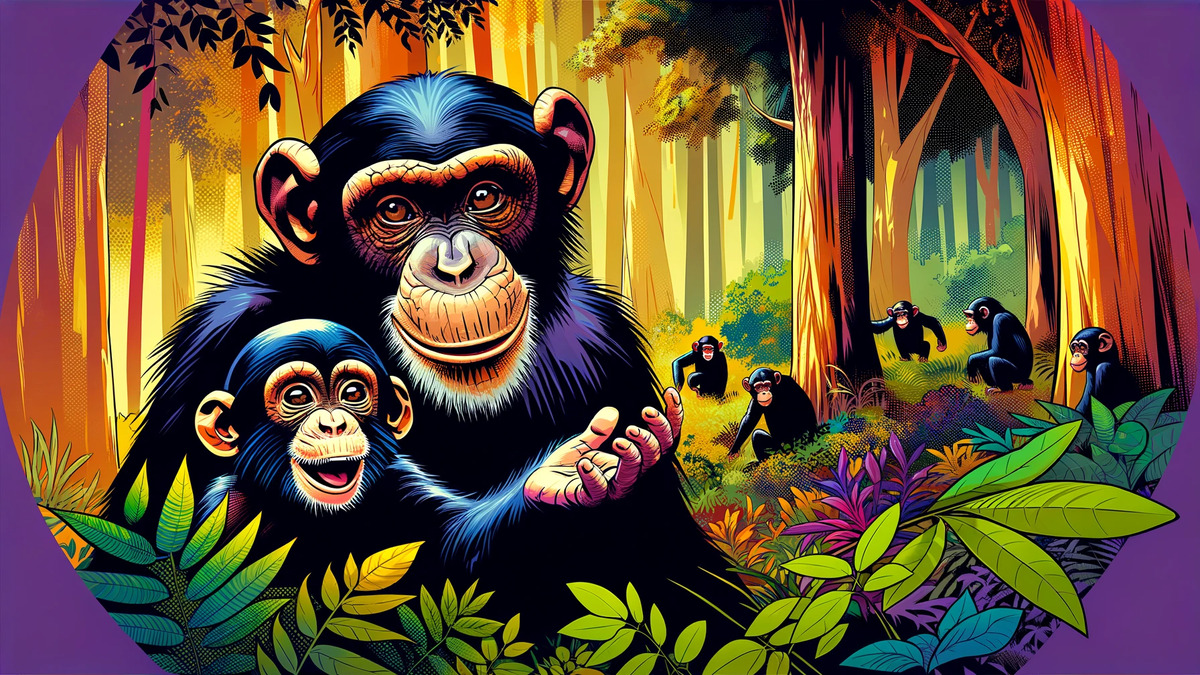Chimpanzees are our closest relatives in the animal kingdom, sharing 98.8% of our DNA.
They live in communities of between 15 and 150 members, which exhibit a divide-and-converge dynamic. They engage in a surprisingly human variety of emotions and social behaviours, including empathy, altruism and cooperation.
They use a variety of vocalisations, facial expressions, body postures and gestures to convey different messages and can even understand human sign language.
They are also one of the few animal species known to use tools. Its behaviour is not only instinctive, but learned and passed down through generations. There are distinctive ‘cultural’ differences in tool-use, for example, some populations use sticks to pull termites out of mounds, while others use stones to crack open nuts.
They are also relatively more aggressive than other great apes, such as gorillas. Of course, they are not usually angry, but they do not joke around when people tease them. There have actually been many cases where humans have been attacked.
For example, their grip strength. Even a baby chimpanzee has a grip strength of 70 kg, which is more than that of an adult human male. How much does an adult weigh? They may look cute, but you should treat each and every one of them as if they were a UFC champion.
And never imitate them like in the video below. (I think this one is indeed fake. LOL)
Chimpanzees are also very culturally active. Unique behaviours are observed in each group, such as grooming practices, courtship rituals, vocalisations and ‘rain dances’ during rainstorms.
They have the ability to solve complex problems and plan future events. For example, they have been observed carrying stones and sticks a considerable distance and storing them for later use as tools.
People have large and small memories, and so do chimpanzees. One chimpanzee demonstrated an extraordinary memory. They showed the ability to memorise the position and sequence of numbers on a screen faster and more accurately than humans.
They are not strict vegetarians and fruit makes up the bulk of their diet. However, they also eat leaves, bark and stems, as well as insects. Most surprisingly, they have been observed to hunt in groups for small primates, indicating a diverse diet and co-ordinated, cooperative behaviour for hunting.
In contrast to many animal species, chimpanzee females are known to mate with multiple males during this period.
Like humans, they are also known to engage in acts of warfare, with inter-group conflicts often leading to violent encounters. These conflicts can be due to a variety of reasons, including territorial disputes and access to resources.
In addition, male chimpanzees have been observed to engage in a behaviour known as ‘charging display’. This involves breaking branches or throwing stones at rivals or predators to make themselves look bigger and make loud noises, with the aim of intimidating them.
Their lifespan in the wild averages around 45 years, but in captivity they can live for more than 60 years. This demonstrates the impact of the diet, medical care and protection from predators that can be provided in captivity. On the other hand, there is an ongoing debate in some quarters about the ethical implications of keeping such intelligent, social creatures in captivity.
Washoe, a chimpanzee taught American Sign Language, learned and used over 200 signs and even taught his adopted son sign language, demonstrating not only his ability to learn human language, but also his ability to pass on that knowledge.
They have also been observed to mourn the death of members of their group and show signs of loss and grief.



コメント